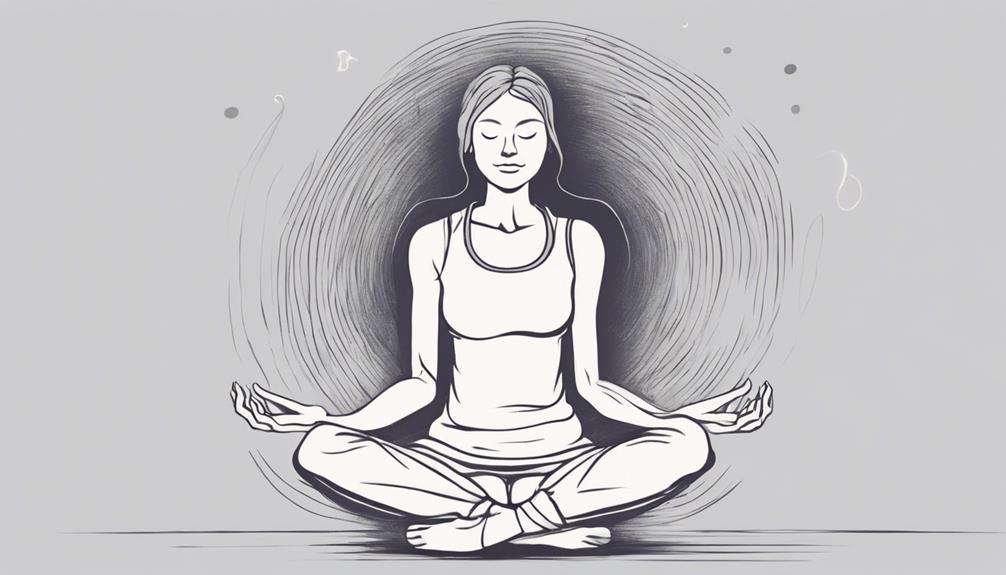When it comes to managing chronic pain with meditation, incorporating three best practices can significantly impact your well-being. By understanding how consistency, mindfulness, and a holistic approach can transform your pain management journey, you're on the path to a more fulfilling and comfortable life.
These practices not only offer relief but also empower you to take charge of your health in a proactive and sustainable manner. Curious to discover how these practices can enhance your pain management skills and overall quality of life?
Key Takeaways
- Mindfulness meditation reduces pain intensity and enhances overall well-being.
- Consistent daily meditation improves pain management outcomes over time.
- Meditation empowers individuals to develop a positive relationship with pain.
- Incorporating mindfulness practices reduces the need for medications in pain management.
Mindfulness Techniques for Pain Management
When managing chronic pain with meditation, incorporating mindfulness techniques can significantly enhance your pain management experience. Mindfulness, a key component of meditation, involves being fully present in the moment without judgment. Research has shown that mindfulness-based stress reduction techniques can be particularly effective in improving lower back pain and overall quality of life for individuals with chronic pain.
By practicing mindfulness techniques, you can tap into neural mechanisms that help alleviate pain. Studies suggest that engaging in mindfulness meditation can lead to decreased brain activation in regions associated with pain processing, ultimately providing relief for chronic pain sufferers. Additionally, mindfulness exercises can help you focus your mind and body, reducing stress and negative emotions that often accompany chronic pain.
Incorporating mindfulness into your meditation practice can't only help manage pain intensity but also increase the activation of pain-reducing opioids in your brain. Embracing mindfulness techniques offers a holistic approach to pain relief, empowering you to navigate the challenges of chronic pain with greater ease and resilience.
Meditation Strategies for Chronic Pain Relief
To effectively alleviate chronic pain, implementing specific meditation strategies can be a valuable tool in enhancing your overall well-being and pain management experience. Mindfulness meditation interventions have shown promising results for chronic pain patients, improving pain management and overall quality of life.
Here are some effective meditation strategies for chronic pain relief:
- Body Scan: This technique involves focusing on different parts of your body, bringing awareness to areas of pain or tension, and gradually releasing them through mindfulness.
- Breathwork: Utilizing controlled breathing exercises can help you relax, reduce stress, and manage pain perception effectively.
- Nonpharmacological Approach: Healthcare professionals recommend mindfulness meditation as a nonpharmacological approach to alleviate chronic pain, offering a natural and holistic method for pain relief.
- Enhanced Well-Being: Incorporating meditation into your daily routine can positively impact your pain perception, promoting overall well-being and enhancing your quality of life.
Integrating Meditation Into Pain Management

Integrating mindfulness meditation techniques into your pain management routine can significantly enhance your ability to cope with chronic pain and improve your overall well-being.
Mindfulness meditation, including mindfulness-based stress reduction (MBSR), has been proven effective in reducing pain intensity and enhancing emotional well-being for individuals struggling with chronic pain. This non-pharmacological approach offers a safe alternative to managing pain, reducing the need for medications with potential side effects.
By focusing on the present moment without judgment, mindfulness practices help you develop a more positive relationship with your pain experience. Healthcare professionals and organizations recommend incorporating mindfulness meditation into your pain management strategies as a valuable adjunct therapy for chronic pain.
Research shows that mindfulness meditation not only helps alleviate physical discomfort but also reduces depression symptoms and enhances your quality of life. Embrace meditation as a key component of your pain management plan to experience the holistic benefits it can offer.
Frequently Asked Questions
What Are the Active Coping Strategies for Chronic Pain?
You can manage chronic pain by accepting pain, reducing stress, connecting mind and body, using relaxation techniques, practicing breathing exercises, maintaining a positive mindset, distracting from pain, engaging in physical activity, prioritizing self-care, and seeking emotional support.
How Do You Meditate With Severe Pain?
When meditating with severe pain, focus on deep breathing, guided imagery, progressive relaxation, and body scans. Accept the pain, show self-compassion, and use visualization techniques to distract and connect mind and body for relief.
What Is the Best Practice in Managing Chronic Pain?
When managing chronic pain, incorporating various techniques like pain distraction, breathing exercises, and positive affirmations can be helpful. Embracing pain acceptance, self-care practices, and journaling therapy nurtures your mind-body connection, fostering relief and resilience.
How to Do Mindfulness for Chronic Pain?
To do mindfulness for chronic pain, start by focusing on breathing techniques. Practice body scans, visualization exercises, and progressive relaxation. Engage in guided meditation, mindful movement, and grounding techniques. Cultivate the mind-body connection, practice pain acceptance, and show self-compassion.
Conclusion
As you continue to practice meditation for managing chronic pain, remember that consistency, mindfulness, and integration with other techniques are key to success.
By staying committed to your meditation routine, staying present in the moment, and exploring different approaches to pain management, you're on the right path to finding relief and improving your overall well-being.
Keep up the great work and trust in the power of meditation to help you on your journey towards a pain-free life.






